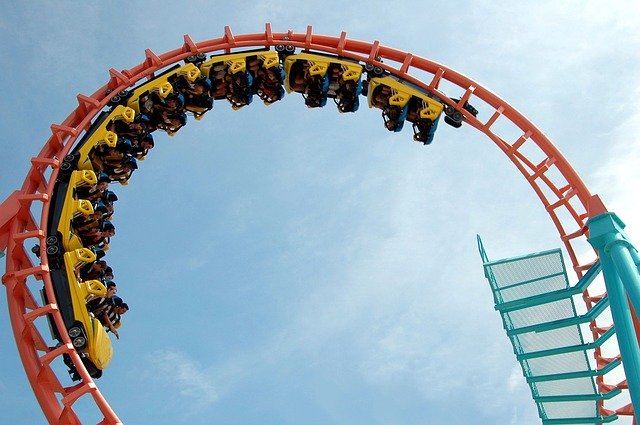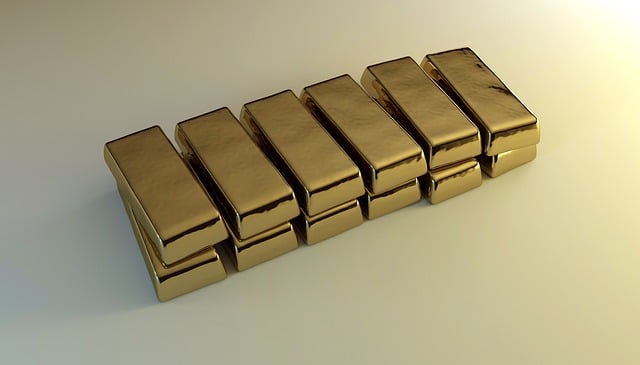The list of globally traded commodities gets longer every year. With so many products, at least one commodity will be a ‘hot property’ at any given moment.
Any commodity that posts double-digit returns will attract a flurry of media attention. With these column inches, interest from beginner investors begins to pick-up.
In this article, I will give my opinion on whether commodities are a sensible choice when building a basic investment portfolio for the first time.
Commodities aren’t exactly beginner-friendly
There’s no avoiding the fact that commodities are a complex asset class. This makes them an unlikely first choice for new investors who are learning about the financial markets for the first time.
The best books about commodities do help to open up this asset class to newcomers. In a similar way, I will provide an overview of the basics in this article.

All the portfolio suggestions that I feature in our Foundation course have no allocation to commodities, and I don’t believe they suffer in the slightest for it.
Investing in the stock market is already an exciting experience without adding the intricacies of the commodities market into the mix!
What’s the problem? Firstly, commodity opportunities can be difficult to access. Secondly. while investing costs on equity funds are reducing; commodities are relatively costly to hold due to their need for physical storage.
That being said, there are investment routes out there which are simple and cost-effective to access. There’s also a case for adding specific commodities to an investment portfolio to apply the science of diversification.
However, any investors considering an investment in commodities should approach the asset class with their eyes wide open. That’s why I’ve summarised several ‘need-to-know’ points below.
What should a beginner know before investing in commodities?
Bubbles are frequent and they burst with alarming regularity.
While the stock market can count ten years since the last great bear market (2008-2009), the commodities market has a less impressive track record.
To name a few examples in the last decade:
- Copper fell from $3.95 in 2008 to $1.40 by the end of the same year.
- Silver fell from $26 in 2011 to under $10 in 2015.
- Corn fell from $8 in 2012 to $3.50 in 2014.
- Brent crude oil price fell from $120 in 2012 to $30 in 2016.
What you’ll notice is that these commodities didn’t all fall at the same rate over the same period. They experienced their own boom and bust cycle. This riot of winners and losers has come to characterise the commodity market.

One thing that you’re seeing is the effect of large producers entering and leaving the market. When a price is high, producers will ramp up production and open new facilities (even if these are less efficient to run).
Producers tend to want to ‘make hay while the sun shines’ therefore the market enters a phase of oversupply. There simply aren’t enough customers to buy all the commodity tonnage being produced, and so the price collapses.
This price fall forces high-cost facilities to shut down, as they can no longer make a profit. The cut-back to the global supply can be sharp and this causes the cycle to repeat itself.
This means that you are likely to see financial success if you are lucky with your timing. But timing the market is a fool’s errand, as I explain in the article is now a good time to invest?
If you invest in commodities because you are confident that you can time the market, you might be misinformed because…
The media can paint a very positive light on a commodity – until they’re proven utterly wrong
If you’re new to investing and see that experts on TV are raving about how amazing precious metals ETFs are doing right now, it is difficult to stop this influencing your decision-making process.
Such positive coverage might not have been the inspiration behind a trading idea, but you may suddenly find yourself a little ‘too’ comfortable rushing into gold.

It’s in our nature to go along with the crowd. Following other investors gives us a sense of safety in a very uncertain environment.
I would prefer if you reacted in the opposite way to such stimuli. I would rather you looked at a graph of skyrocketing prices and start worrying. If wall-to-wall media coverage put you off rather than turned you onto an investment idea.
If you take this ‘contrarian’ approach, you wouldn’t have owned oil in 2012, or copper in 2008!
You need a £30,000 portfolio to efficiently hold a small commodities allocation
Commodities are volatile instruments and I advise against holding more than 5% of your portfolio in commodities.
If you gain this exposure through a single ETF that covers a basket of commodities, you will want to invest at least £1,500 to push commission (and relevant taxes) down to below 1% of your initial purchase.
With the aim of keeping commodities below 5% of your portfolio, you’ll need an account worth £30,000. This is not a common sum for investors to have at their disposal when they begin their investing journey.
Read more: The best portfolio management books
You should challenge your motivation for holding commodities
Are you including commodities because you firmly believe that in the medium to long term they will produce returns that rival equities?
If so, I would ask you to reevaluate your investment strategy and understanding of the asset classes.
If you take a look at the history of the commodities market, you’ll find periods of 20 years where certain commodities fail to end higher than they began.
Unlike stocks, which represent growing organisations that can innovate, commodities are dead and cannot summon any loyalty to their owner. When choosing what to invest in, rather than choosing between management teams and new technology, a commodity investor is choosing between economical arguments such as supply & demand projections.
It gets worse. Over the very long term, commodities are also vulnerable to total obsolescence. Oil is a perfect example. Alternative technologies like solar or nuclear might totally replace fossil fuels by the end of this century.
The real value of commodities is that as a basket, they have positive expected returns overall. At the same time, their movements are negatively correlated with movements in the stock market. This makes them special indeed.
Looking after a pile of gold isn’t easy
Commodities are exposed to a type risk that doesn’t apply to shares and bonds: theft.
Because shareholders and bondholders have their claims recorded on a central register, it is virtually impossible to ‘steal’ these financial instruments.
However, a bar of gold is just as pinchable today as it was a century ago.

As a result, the annual cost of holding a precious metal can be relatively high.
Bullionbypost offers secure storage for £100,000 of gold for £760 per year. That’s a lump of gold bullion about the size of a smartphone.
You might decide that you would prefer holding gold at your home address. However, this will require you to buy suitable storage and of course, insurance.
If you’ve read our article on how to invest in gold, you’ll appreciate that there are many different options to help you find an efficient way to hold the metal – but storage costs will always be a tangible element of your investing costs with such a desirable item.
Read more: The best books about investing in gold
There are better places to begin
These reasons are ultimately why I included my how to invest in commodities guide as part of the Advanced investing course rather than the Foundation course.